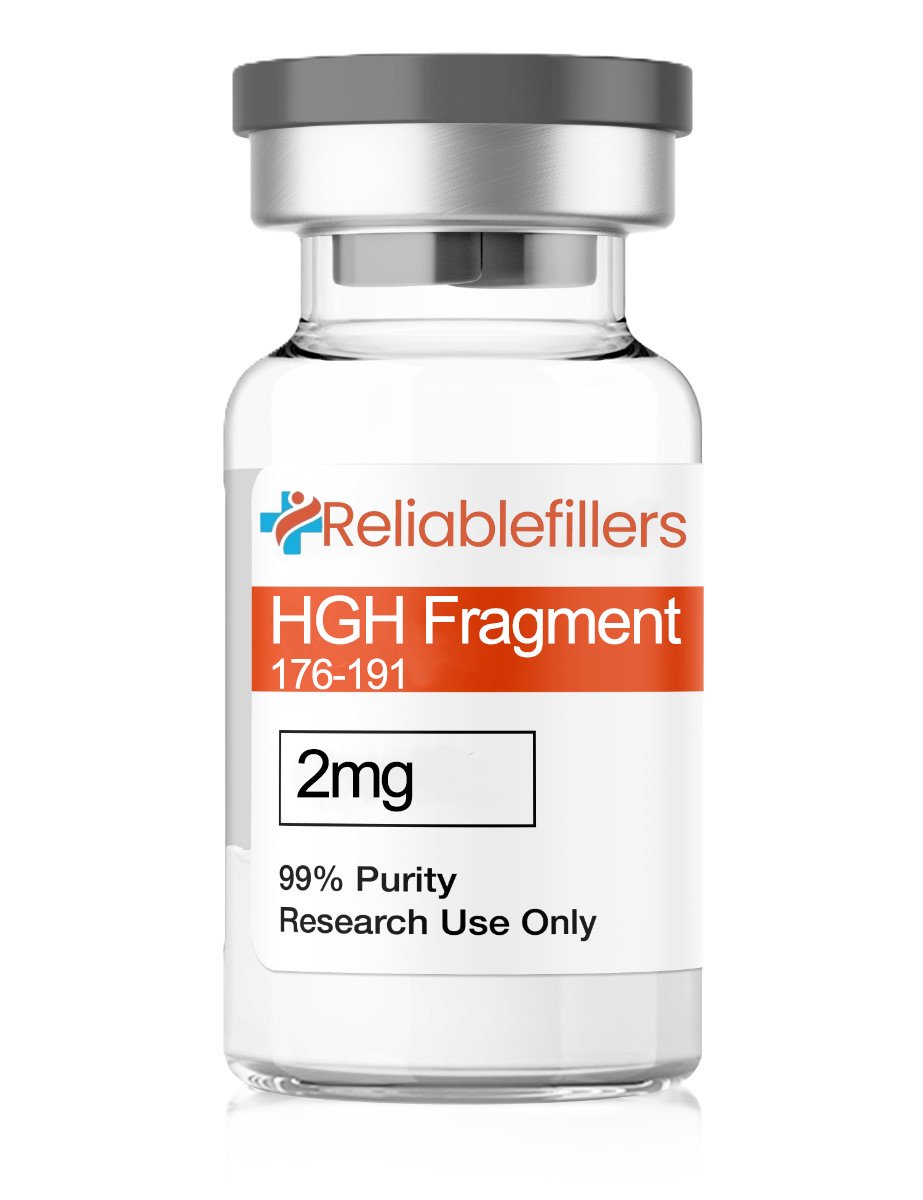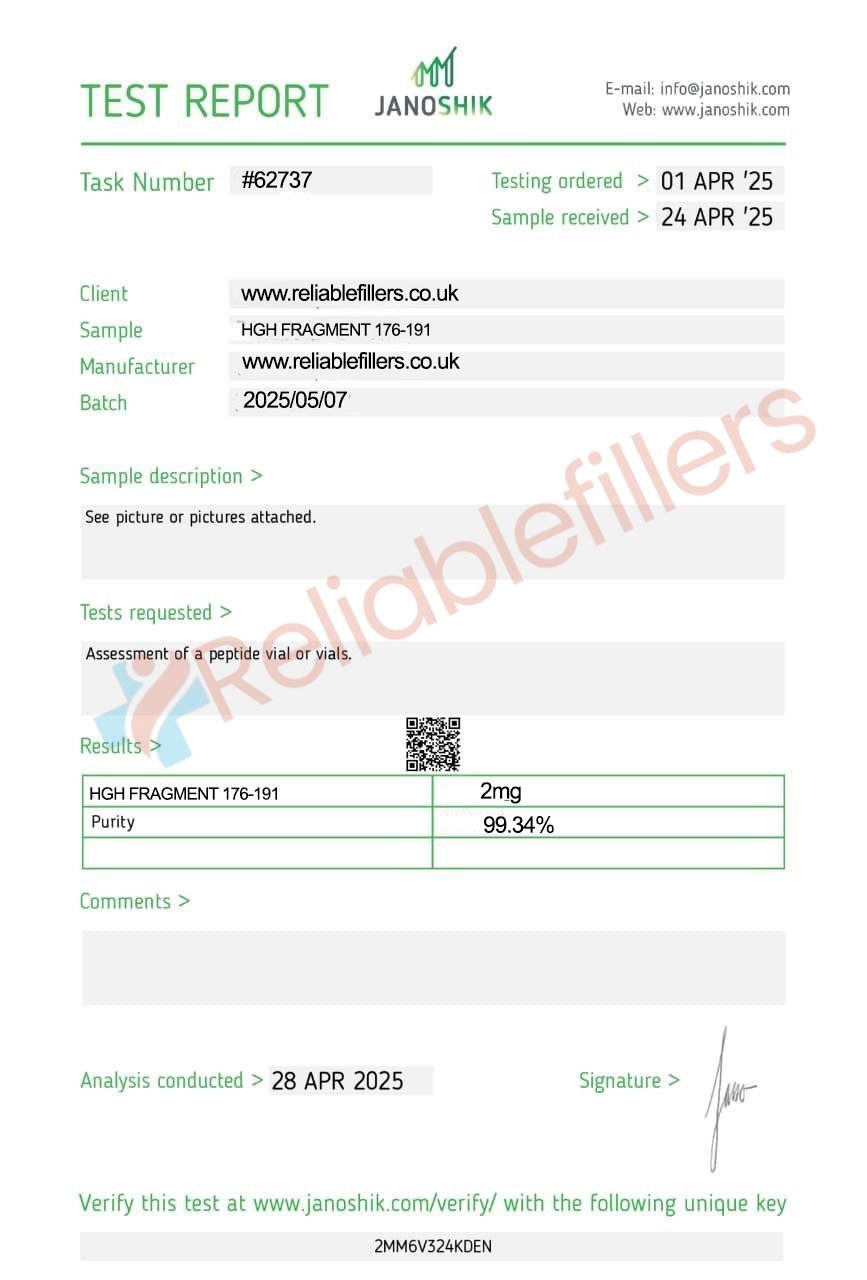HGH frag 179 – 191 2mg
HGH Fragment 176-191 is a small, synthetic piece of natural human growth hormone (hGH). It is often referred to as the “lipolytic fragment” for its ability to boost fat loss. It has been shown to help lower blood sugar levels and promote cartilage healing without increasing long bone growth, increasing IGF-1 levels, or altering insulin sensitivity.
Fragment 176-191 Peptide
Fragment 176-191 peptide, also known as hGH Fragment 176-191, tyr-hGH 177-191, or AOD-9604, has been suggested by researchers that it may stimulate weight loss and fat burn in a fashion similar to that of the growth hormone (hGH). hGH is a naturally occurring hormone, which, apart from stimulating growth, as the name suggests, may also stimulate catabolism of adipose tissue and the release of lipids from fat cells. Fragment 176-191 is a small ‘fragment’ of the growth hormone hGH composed of 16 amino acids. This involves the last 16 amino acids of the hGH molecule, which scientists propose to be the “lipolytic fragment” of hGH. Lipolythic, as a term, reflects the purported fat-burning properties of the molecule. To potentially improve the stability of the peptide, the first amino acid in the hGH Fragment 176-191 sequence is also replaced by tyrosine. Thus, the peptide is also labeled as Fragment tyr-hGH 177-191.
Overview
This peptide could, in theory, aim at the beta-3 adrenergic receptors (ß3-AR), which might, in turn, lead to a potential weight loss action. It is posited that through these receptors, the peptide may encourage fat burning in adipose tissue and foster ‘thermogenesis’ in skeletal muscle cells. In a study involving obese murine models exposed to the peptide for two weeks, there seemed to be an apparent decrease in weight, including a reduction in excess fat. These observations are thought to be linked to a rise in the activity of lipolytic beta-3 adrenergic receptors, hinting that the peptide’s actions could be connected to the beta-adrenergic pathway. The researchers commented that Fragment 176-191 may be “capable of increasing the repressed levels of beta(3)-AR RNA in obese mice to levels comparable with those in lean mice.” Unfortunately, the data may not be conclusive, as the research on murine models with disabled lipolytic receptors suggested that the peptide still led to apparent weight loss, suggesting its actions might not solely rely on these receptors. Thus, it was also considered that the peptide might help burn fat through mechanisms like energy expenditure and fat oxidation, though this remains an area for further investigation.





Reviews
There are no reviews yet.